The Intricacies of Beatboxing: An Exploration of Vocal Artistry

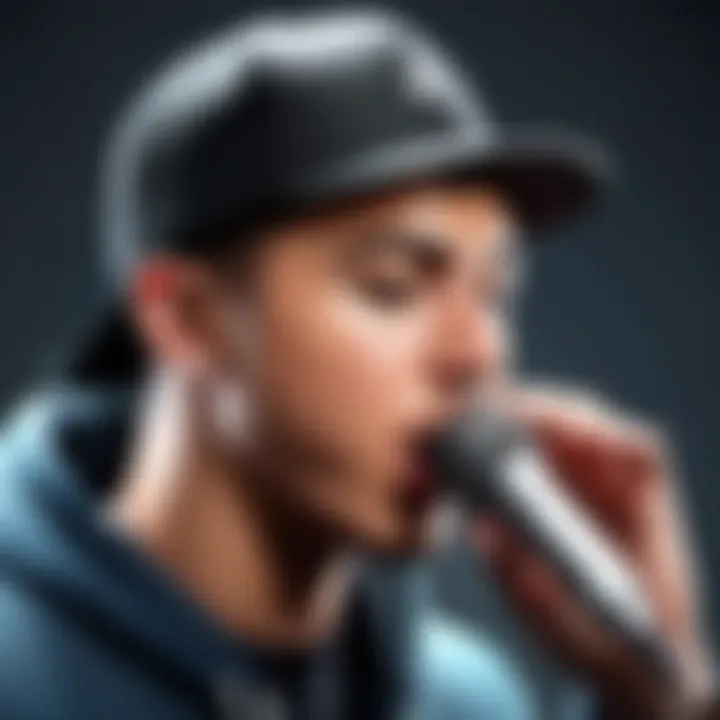
Intro
Beatboxing stands out as a vital form of vocal percussion that marries rhythm and sound with incredible creativity. This article aims to unfold the various layers of this art form, revealing its historical roots, technical intricacies, and cultural significance. Through the examination of influential figures whose artistry has shaped beatboxing and the role of current technology, we provide insights that resonate with both enthusiasts and aspiring practitioners.
This exploration is timely and necessary, as beatboxing continues to evolve, carving out its place within a wider music industry and influencing diverse genres. By setting a clear path through the dense landscape of beatboxing, this guide aims to enrich understanding and appreciation for this vocal craft.
Technology Insights
Beatboxing has increasingly intersected with technology, leading to innovative techniques and broader accessibility. This section looks into the latest tech trends that influence beatboxing, enhancing creativity and performance.
Latest Tech Trends
Recent advancements have created a platform where beatboxers can experiment and improve their craft. Software like Ableton Live and hardware like the Loop Station can dramatically amplify sound manipulation and layering. These allow artists to build soundscapes live, pushing the boundaries of performance.
Innovation in Tech
Tech innovations in the field of beatboxing include the integration of digital sound processing devices. Many beatboxers use microphones that can filter sounds in real-time, creating effects previously reserved for studio environments. Moreover, development of mobile apps dedicated to beatboxing practice helps newcomers hone their skills with guidance from more experienced practitioners.
"The fusion of technology and beatboxing has opened doors to a new dimension of creativity."
Product Reviews
Products like the Boss RC-505 Loop Station are popular among beatboxers seeking to enhance their performance. This device offers multi-track looping features that allow artists to layer beats, vocal sounds, and even mimic instruments. Another notable mention is the Shure SM58 microphone, a staple in live vocals. Its clarity and durability make it a preferred choice for beatboxers aiming to project their sound effectively.
Cultural Significance
As we proceed, it’s crucial to assess how beatboxing stands as both an art form and a cultural phenomenon. Its roots in hip-hop has given it a unique identity, fostering community and creativity across diverse demographics. Beatboxing is not just a performance; it is a means of expression that has thrived in various social contexts, contributing significantly to contemporary music culture.
Closure
This overview provides only a glimpse into the vast world of beatboxing. From its deep-rooted history to futuristic technological influences, it is clear that beatboxing is much more than a rhythmic challenge; it is a living art form that continues to evolve. As we delve deeper into its nuances, an appreciation for this complex craft will only grow, showcasing its importance in today’s musical landscape.
Prologue to Beatboxing
Beatboxing has gained traction as a notable form of creative expression. It combines rhythm, vocalists, and sounds, allowing individuals to perform impressively without musical instruments. The increasing popularity of beatboxing today is evident not just in music but across various media platforms.
Definition of Beatboxing
Beatboxing can be defined as the art of creating rhythms and sounds using the human voice. Originating in the hip-hop culture, it involves vocal techniques that mimic traditional percussion instruments. By using a combination of vocalizations, a beatboxer can replicate complex drum patterns, bass lines, and other musical elements.
This art form is not limited to mere mimicry. It showcases a beatboxer's creativity and personality, shaping a unique auditory experience. The term itself combines elements of “beat,” representing rhythm, and “boxing,” indicating the craft's improvisational nature. This reflects the dynamic aspect of beatboxing as both an individual and communal performance.
The Art of Vocal Percussion
Vocal percussion transcends simple beat imitation. It is a multifaceted process that requires considerable skill. Beatboxers need to master various techniques, such as breathing control, pitch modulation, and sound clarity. These techniques help in creating intricate layers of sound that can accompany songs or stand on their own.
Key elements of vocal percussion include:
- Kick Drum Sounds: Often produced with a "b" or "p" sound, these provide the foundational beat.
- Hi-hats and Snares: Created with sharp sounds, usually mimicking cymbals, to add texture.
- Bass Drops: Lower frequencies made by manipulating the throat or lips create depth in performance.
As beatboxing evolves, so does the exploration of vocal boundaries. Competitions and collaborations have pushed artists to innovate further, enhancing the overall complexity and appreciation of this vocal artistry. Beatboxing exemplifies how sound can be manipulated to produce an amalgam of beats that resonate with various audiences.
"Beatboxing is not just an art form; it’s a language that transcends cultural barriers."
Involvement in beatboxing often leads to communities forming around this shared passion, promoting collaboration and skill enhancement. Understanding beatboxing from this angle raises its status beyond a novelty, establishing it as a vital aspect of contemporary music and cultural expression.
Historical Development of Beatboxing
The historical development of beatboxing is an essential aspect of understanding its cultural and artistic significance. From its origins to its evolution over decades, this journey gives context to the contemporary art form. Understanding this progression not only highlights the transformative power of vocal artistry but also illustrates how beatboxing has interconnected with various musical genres and societal movements. We can see how beatboxing has adapted to changing styles and technologies while remaining true to its roots as a form of self-expression.
Origins and Early Influences

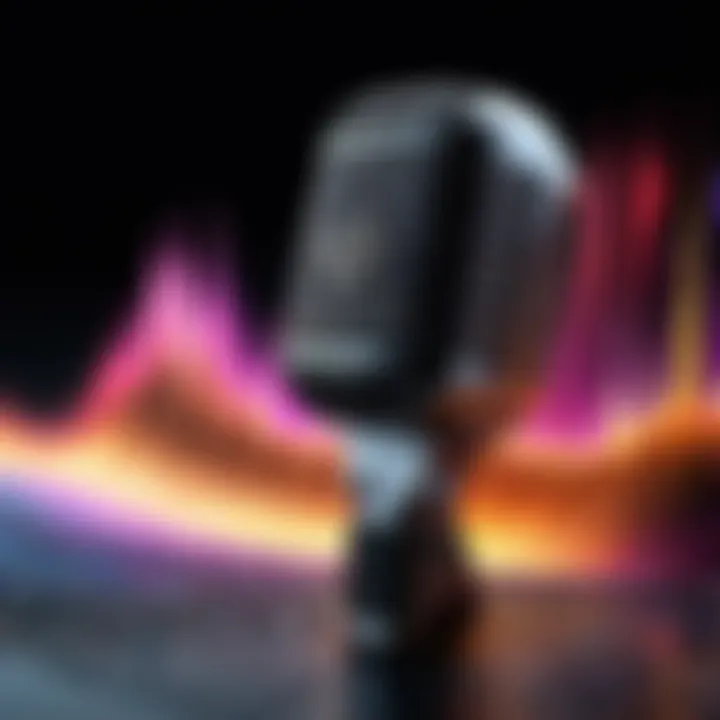
Beatboxing traces its roots back to the 1980s, evolving in the vibrant spheres of street culture. This period saw the rise of hip-hop, where vocal percussion started to gain prominence as an integral element of the genre. Influential artists like Doug E. Fresh are often credited with pioneering beatboxing. His unique vocal skills paired with rhythm created a new dimension in performances. Other early influencers included Biz Markie, whose playful vocal sounds captured audiences and exemplified the groundbreaking nature of beatboxing in live shows.
The influence of existing musical traditions is worth noting. Vocal mimicry and percussive sounds can be found in various cultural practices, including African and Asian musical styles. These early influences enriched the beatboxing repertoire, laying the groundwork for future artists to build upon.
Evolution Through the Decades
As we moved into the 1990s and 2000s, beatboxing began to evolve and diversify. This phase showcased increased technical innovation and experimentation. Artists such as Rahzel from the Roots and Kenny Muhammad developed more complex sounds and techniques, pushing the boundaries of what could be achieved with the human voice. Their ability to imitate instruments expanded the beatboxing vocabulary significantly.
The digital revolution also played a crucial role in the evolution of beatboxing. The rise of the internet and social media platforms allowed artists to share their work with a global audience. Videos and tutorials on platforms like YouTube made beatboxing more accessible to new learners and enthusiasts worldwide. Now, anyone interested could find resources to refine their skills and connect with a broader community.
In recent years, beatboxing has seen a resurgence, integrating with various musical genres. Collaborations with electronic music and pop artists have further amplified its visibility. Now, beatboxing is an established art form, recognized both in live performances and competitions.
"Beatboxing is not just mimicry of sounds; it's a powerful form of storytelling and expression."
Overall, the historical development of beatboxing illustrates its resilience and adaptability. Each era brought new influences, shaping the modern landscape of this unique vocal artistry. As we continue exploring beatboxing, understanding this history enhances our appreciation of its present and future.
Technical Aspects of Beatboxing
The technical aspects of beatboxing play a crucial role in understanding this unique vocal art form. These elements not only showcase the diversity of sounds that can be produced but also illustrate the skills needed to master beatboxing. Technical proficiency is distinguishing factor in the performance of beatboxers, allowing them to create complex rhythms and layers of sound that captivate audiences. In this section, we focus on two primary areas: the fundamental techniques and sounds that start any aspiring beatboxer's journey, followed by advanced techniques that set professional artists apart.
Fundamental Techniques and Sounds
When beginners embark on their beatboxing journey, they must first grasp the basic sounds essential for creating rhythms. These fundamental sounds are the building blocks of beatboxing and include:
- Bass Drum (B): This sound mimics the low thump of a bass drum. It forms the foundation of many beatboxing patterns.
- Hi-Hat (T): Producing the high-frequency sound of a hi-hat is crucial. It often complements the bass drum, adding texture to rhythms.
- Snare Drum (K): The snare sound adds a punchy element to the performance. Learning to replicate this sound is vital for rhythmic diversity.
Practicing these basic sounds involves repeated vocal exercises. Regular repetition helps develop muscle memory, enhancing vocal control and sound clarity. Beyond just sound production, mastering rhythm and timing remains essential. Beatboxers often tap out rhythms or use metronomes during practice to sharpen timing.
Advanced Techniques Used by Professionals
Once the fundamentals are mastered, beatboxers can explore advanced techniques to elevate their artistry. Professional beatboxers employ various complex tactics, which include:
- Vocal Harmonization: This involves layering multiple vocal parts. By using pitch variations and harmonies, the beatboxer creates a fuller sound, mimicking instruments or vocal choruses.
- Inward Sounds: These sounds, made while inhaling, allow the artist to maintain a rhythm without interruption. This method creates dynamic flow in performances, enhancing sustainability in longer sets.
- Beatboxing with Effects: Advanced beatboxers use effects like vocal distortion or reverb, which can be achieved naturally through techniques like throat singing. Integrating these effects can produce a richer, more complex auditory experience.
"The mastery of advanced techniques can significantly enhance a beatboxer's versatility and the overall quality of their performances, allowing them to innovate continually."
To truly grasp the significance of these technical aspects, one should also consider the context of performance. Each technique influences how a beatboxer interacts with other musicians and engages an audience. The technical prowess displayed certainly sets the stage for collaborative creativity, bridging the gap between beatboxing and other musical styles.
Key Influencers in Beatboxing
The realm of beatboxing is deeply shaped by the contributions of a myriad of artists who have paved the way for this unique form of vocal artistry. Understanding these key influencers is essential, as they provide valuable insights into the evolution, techniques, and cultural significance of beatboxing. This section will focus on two main aspects: the pioneers who laid the groundwork and the contemporary artists who continue to push boundaries. Their achievements not only enrich the beatboxing culture but also inspire countless newcomers to explore this vibrant art form.
Pioneers of the Art Form
Pioneers in beatboxing have played a fundamental role in establishing it as a respected art form. One prominent figure is Doug E. Fresh, known as the "Human Beatbox." His innovation in using vocal techniques to replicate drum sounds laid the foundation for many beatboxers who came after him. In the early days of hip-hop in the 1980s, Doug E. Fresh showcased how beatboxing could complement rap music, earning him recognition and respect within the music community.
Other significant artists include Biz Markie and Rahzel of The Roots. Biz Markie not only created memorable beats but also brought humor and creativity to his performances, transforming beatboxing into a form of entertainment that resonated with the audience. Rahzel, often referred to as the "Godfather of Noyze," elevated the craft by incorporating complex rhythms and melodies into his performances, setting a benchmark for excellence in the art. Their work has showcased the versatility of beatboxing and its ability to blend seamlessly with various music genres.
Contemporary Artists Shaping the Scene
As the art form has progressed, contemporary beatboxers have emerged, each with unique styles that reflect the changes in music and technology. Artists like Reeps One and Kenny Muhammad are at the forefront of this movement. Reeps One has gained acclaim for his technique that involves layering sounds and producing intricate rhythms. His incorporation of electronic sounds and influences from different music genres has expanded the traditional boundaries of beatboxing.
Kenny Muhammad, known as the "Human Orchestra," is celebrated for his capacity to create multiple sounds simultaneously. His deep understanding of rhythm and sound has not only popularized beatboxing but has also highlighted the importance of creativity in this art form.
Additionally, newer artists are harnessing digital platforms such as YouTube and TikTok to showcase their talents. The reach of these platforms has allowed artists to connect with audiences globally, creating a vibrant community around beatboxing. This evolution ensures that beatboxing remains dynamic, with emerging talents continually redefining its possibilities.
"Beatboxing is a powerful testament to the creativity of the human voice, and its community fosters innovation and artistic expression across generations."
Overall, the influence of these key figures cannot be overstated. They serve as role models for aspiring beatboxers and highlight the importance of innovation, technique, and cultural relevance in this continually evolving art form. Through their efforts, beatboxing has established itself not just as a subculture within hip-hop, but as a respected discipline in its own right.
Beatboxing and Music Genres
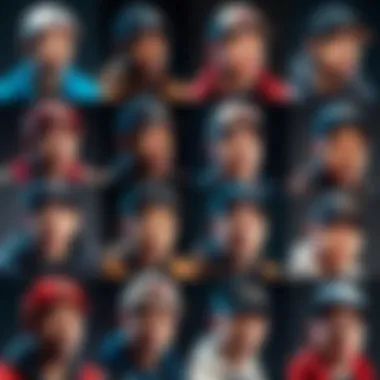

Beatboxing occupies a unique niche in the music landscape. It is not confined to a single genre; rather, it serves as a bridge between various styles. The vibrancy and versatility of beatboxing enhance the auditory experience, making it an essential element in numerous musical expressions. This section will delve into the significant aspects of beatboxing's integration with hip-hop and its role in cross-genre collaborations, shedding light on the broader cultural implications that arise from these intersections.
Integration with Hip-Hop
Hip-hop is perhaps the genre most synonymous with beatboxing. This connection is not only historical but also deeply rooted in the ethos of the culture. Beatboxing emerges from the foundational elements of hip-hop: DJing, MCing, graffiti, and breaking.
In live performances, beatboxers create rhythms that complement rappers' lyrics, enhancing the overall energy of a show. This synergy produces a powerful, dynamic atmosphere that resonates with audiences. Notable artists such as Doug E. Fresh and Biz Markie helped popularize beatboxing in hip-hop's formative years. Their contributions demonstrate how vocal percussion can supplement and elevate traditional hip-hop elements.
Moreover, beatboxing allows for a spontaneous and interactive musical dialogue. Rappers often engage beatboxers during freestyles. This blend of improvisation adds freshness to performances. The unique versatility of beatboxing enables artists to explore musical boundaries within hip-hop, making it easier to merge different styles and rhythms into their work.
Cross-Genre Collaborations
Beatboxing transcends genres, fostering collaboration between diverse musical styles. The adaptability of vocal percussion means it fits seamlessly into genres beyond hip-hop, such as pop, electronic, and jazz. Artists increasingly embrace beatboxers to add depth and texture to their compositions.
Collaborations can take various forms, from featuring a beatboxer on a track to entire concerts merging multiple genres. For instance, artists like Ed Sheeran and Billie Eilish have incorporated beatboxing to create a more layered sound. In such collaborations, beatboxing serves as an innovative tool to extend creative possibilities.
Furthermore, the global reach of beatboxing has stimulated interactions between different cultural music styles. This cultural exchange leads to the creation of hybrid genres, enriching the music scene. Beatboxing's presence in world music exemplifies this trend, as it integrates traditional sounds with modern styles.
"Beatboxing is more than just an art form; it's a universal language that brings together musicians from every corner of the globe."
The Cultural Significance of Beatboxing
Beatboxing transcends mere entertainment; it is a vital part of the cultural tapestry in various communities. This section looks at how beatboxing has impacted street culture and its role in fostering global connections and community building.
Impacts on Street Culture
Beatboxing is deeply interwoven with street culture, serving as a form of self-expression and identity. It provides a voice to those who often feel unheard in other art forms. In urban landscapes, beatboxers often begin as street performers. They capture the attention of passersby with intricate rhythms and percussive sounds, showcasing talent and creativity. It creates a sense of belonging among artists who share their skills in an unstructured environment.
The art form's accessibility is significant. Only the human voice is needed. No instruments are necessary. This characteristic allows for spontaneous performances and collaborations. Beatboxing has hence become an integral part of hip-hop culture, a genre that values creativity and authenticity. Additionally, it often signifies a resistance to societal norms. In many communities, beatboxing reflects issues like social justice, equality, and anti-establishment sentiments.
"Beatboxing is not just about making sounds. It's a reflection of culture, struggles, and triumphs."
Global Influence and Community Building
The global reach of beatboxing cannot be overlooked. Through online platforms, beatboxers connect from all corners of the world. This connection encourages cultural exchanges and collaborations. Events like the World Beatbox Championship help foster this sense of community. Participants from diverse backgrounds come together to appreciate and innovate the craft.
The vibrant online communities on platforms such as Reddit and Facebook allow artists to share techniques and performances. They create a supportive ecosystem that nurtures growth. Moreover, the proliferation of social media has enabled beatboxers to reach wider audiences. Their work is now accessible beyond local contexts, allowing for cultural diffusion.
Furthermore, educational aspects are emerging. Workshops and tutorials are available, attracting newcomers. This aspect helps in cultivating future generations of beatboxers. The practice's cultural significance lies in its ability to unify people while celebrating their individual experiences.
The Role of Technology in Beatboxing
Technology plays a crucial role in the evolution and dissemination of beatboxing. It has significantly altered how artists create, share, and experience this form of vocal artistry. With advancements in digital platforms, beatboxers can reach wider audiences and collaborate seamlessly with musicians around the globe. Thus, technology shapes not only the performance aspect but also the community surrounding it.
Digital Platforms and Distribution
Digital platforms have transformed the landscape of beatboxing. On social media channels like YouTube, Instagram, and TikTok, beatboxers can showcase their skills to millions instantly. These platforms enable artists to create engaging content, expanding their reach beyond local scenes. The viral nature of these platforms fosters community engagement and allows new talents to emerge.
In addition, sites like SoundCloud and Bandcamp provide a space for artists to upload their tracks and receive feedback. This has democratized music distribution. Now beatboxers can circumvent traditional music industry gatekeepers. Instead, they can directly connect with fans and other artists, allowing for a more personal interaction instead of relying on record labels.
Moreover, platforms such as Patreon offer support for artists through fan subscriptions. As a result, beatboxers can fund their creative practice and produce more innovative content. Thus, the rise of digital platforms is a vital element in the growth and sustainability of beatboxing as a professional discipline.
Innovative Tools for Beatboxers
Innovative tools have also enhanced beatboxing. Software like Ableton Live and FL Studio enables beatboxers to mimic live studio environments. They can layer their sounds, create complex tracks, and experiment with effects that may not be possible in a solo performance. Furthermore, mobile applications like Dubsmash allow users to add beatboxing tracks to their videos, making it easier for newcomers to engage with the art form.
Hardware developments also play a part. Loop stations, such as those made by Boss or RC-505, provide artists with real-time abilities to layer beats. This gives performers more creative freedom to experiment with different rhythms and sounds? Offering a variety of sounds enhances the audience experience. Consequently, this technology pushes the boundaries of what beatboxing can achieve.
"Technology is not just an enabler for beatboxing, it is a fundamental part of its identity and growth in the past decades."
Beatboxing Competitions and Community Events
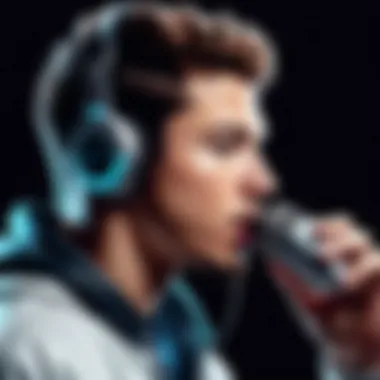
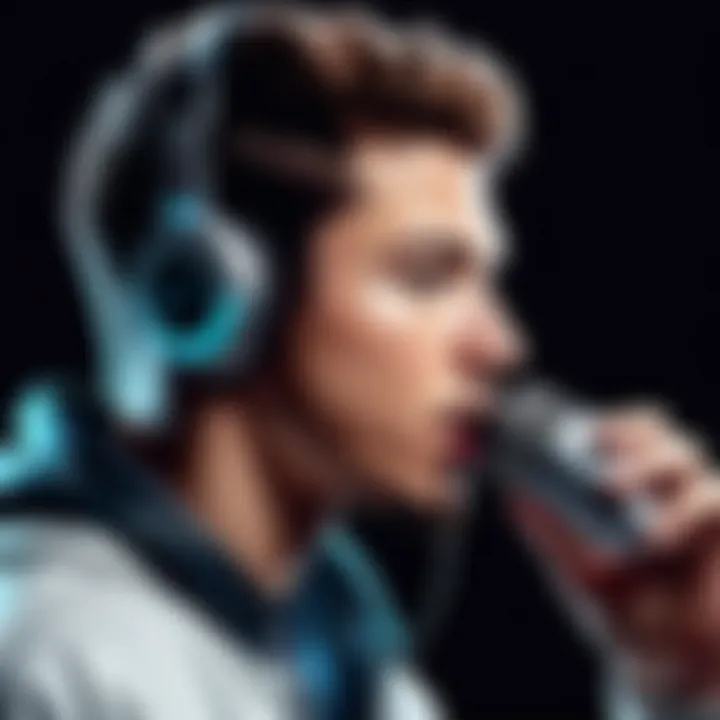
Beatboxing competitions and community events play a crucial role in the evolution and recognition of beatboxing as a legitimate art form. These gatherings not only showcase talent but also foster a sense of belonging among artists and enthusiasts alike. Through these events, participants gain exposure, learn from their peers, and contribute to the growth of the beatboxing community.
Major Competitions Around the World
Numerous competitions exist worldwide that highlight beatboxing talents. Such events often attract beatboxers from various backgrounds, helping to bridge cultural differences while enhancing the craft. Here are some notable examples:
- Grand Beatbox Battle: This is one of the most prestigious global beatboxing competitions. It regularly features top-tier beatboxers and offers exciting categories such as solo, tag team, and loop station battles.
- Beatbox Battle World Championship: Held in various locations, this competition has established itself as a leading event for showcasing skills and techniques in beatboxing. Its high stakes and competitive atmosphere inspire performers to push their boundaries.
- American Beatbox Championships: This event focuses on showcasing American talent and fostering a national beatboxing community. It attracts entrants from across the United States, highlighting the diversity across performance styles.
These competitions serve to elevate the skill level within the community. They also highlight the unique creativity and adaptability of beatboxers, promoting the art form to wider audiences. Participants often leave these events with new insights and techniques, contributing to their own personal growth as artists.
Building Community Through Events
Beyond the competitions, community events nurture connections among beatboxers and fans. Workshops, showcases, and local meetups provide informal settings for sharing techniques and collaborating with others. This sense of community is vital for several reasons:
- Skill Development: Community events often include workshops led by seasoned beatboxers. This gives participants opportunities to refine their techniques and learn new styles.
- Networking Opportunities: Events create a platform for beatboxers to network with one another, building relationships that can lead to collaborations and shared performances.
- Cultural Exchange: By uniting beatboxers from different regions, these gatherings encourage cultural exchange, further enriching the art form.
- Supportive Environment: A community atmosphere nurtures support rather than competition. It fosters a safe space where artists can experiment and evolve.
Challenges Faced by Beatboxers
Beatboxing, while a growing phenomenon, faces various challenges that impact the artists who dedicate themselves to this unique form of vocal percussion. A thorough understanding of these challenges will offer insight into the resilience required for practitioners and the evolution of beatboxing as an art form. Addressing these challenges is essential to appreciate the depth and complexity of beatboxing within the broader context of the music industry.
Artistic Recognition in the Music Industry
Artistic recognition is a significant hurdle for many beatboxers. Despite the skills and creativity involved, beatboxing often struggles to gain the same level of acknowledgment as other musical disciplines. This disparity can be attributed to several factors.
Firstly, mainstream music platforms and traditional recording labels tend to prioritize more conventional forms of music. Many beatboxers find it challenging to secure record deals or opportunities that would allow them to showcase their talents. This creates a perception that beatboxing is a niche activity rather than a legitimate musical genre.
Additionally, beatboxing is frequently associated with street performances or underground scenes, which can limit its exposure. Nonetheless, there has been a slow shift. Events like the Beatbox Battle World Championship help to bring visibility to the art form, showcasing top talent on a global scale. Furthermore, collaborations with well-known musicians have begun to elevate the profile of beatboxing, pushing it into mainstream consciousness.
Maintaining Vocal Health and Technique
Maintaining vocal health is another critical challenge for beatboxers. The techniques involved in beatboxing can put substantial strain on the vocal cords and respiratory system. The intensive nature of sound production requires practitioners to exert considerable effort, making vocal fatigue a common issue. Consequently, many beatboxers implement strict routines to care for their vocal health.
Proper hydration and warm-up exercises are fundamental practices before performances or strenuous practice sessions. Moreover, advanced beatboxers often work with vocal coaches to refine their technique and safeguard against injuries. Training in breath control and efficient sound production can significantly reduce the risk of overexertion while maintaining the quality of their performance.
Ultimately, these challenges are integral to the evolution of beatboxing. They demand innovation, adaptability, and a deep passion for the art form. As beatboxers continue to navigate these obstacles, the community has the potential to expand, foster new talent, and grow its influence within the music industry.
"The journey through challenge is often what defines the artist, pushing them to innovate and adapt in their craft."
Through understanding these critical challenges, one gains a deeper appreciation for the efforts and artistry that beatboxers contribute to the world of music.
The Future of Beatboxing
The evolution of beatboxing is an ongoing journey influenced by hands-on artistry, cultural shifts, and rapid technological advancements. As this vocal art form continues to transform, it is crucial to consider its future. Beatboxing is not only a means of artistic expression but also a vehicle for creativity and innovation across various music genres.
Looking ahead, several trends and considerations are becoming increasingly significant. The integration of digital technology, such as software tools and social media platforms, is reshaping how artists create, collaborate, and engage with audiences. By maximizing these platforms, beatboxers can gain recognition and build communities that share their passion.
Emerging Trends and Innovations
With the advent of innovative music software and hardware, the landscape of beatboxing is changing. Artists are now exploring new sounds by utilizing looping pedals and live production tools. These advancements allow for intricate layering of sounds and rhythms that were previously difficult to achieve in live settings.
Additionally, collaborations between beatboxers and musicians from other genres are rising. This mingling facilitates the birth of hybrid styles, pushing boundaries and enhancing creative expression. Social media platforms, especially TikTok and Instagram, are becoming popular stages for showcasing new techniques and performances. Artists leverage these platforms not only for exposure but also for interactive engagement with their followers.
Key Innovations to Watch:
- Looping Devices: Enhance live performances with real-time sound layering.
- Mobile Apps: Allow aspiring beatboxers to practice and record their sounds easily.
- Performance Platforms: Facilitate virtual competitions and collaborations.
Continuing Evolution of the Art Form
As beatboxing evolves, it adopts influences from various music styles, such as electronic dance music, pop, and alternative genres. This blend enriches the art form and introduces new audiences. Beatboxers are continually crafting their unique sounds, often by blending traditional techniques with contemporary musical elements.
The community itself is also changing, with more diverse voices entering the space. Female and underrepresented artists are stepping into the limelight, challenging historical norms and shaping the direction of beatboxing.
In summary, the future of beatboxing looks promising, marked by creativity and adaptability. This art form reflects cultural dialogues and technological shifts and encourages continuous learning among its practitioners.
"Beatboxing is not merely a performance; it embodies the essence of innovation and artistic evolution in sound."
As beatboxers embrace emerging technologies and collaborate across boundaries, they play a pivotal role in determining the future trajectory of this dynamic vocal art form.







